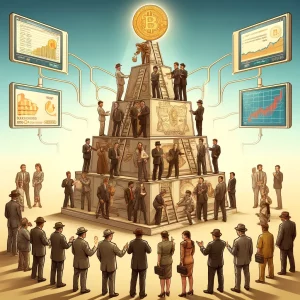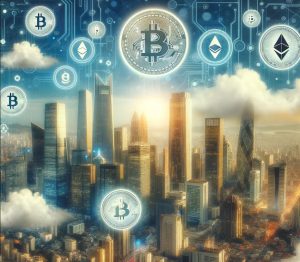The Potential of the Metaverse
5 min readThe idea of the Metaverse was popularized through pop culture, most notably in the novel and film Ready Player One. While the metaverse in Ready Player One is fictional, the idea of a parallel world in the distant future isn’t too far-fetched. Some companies are already working on developing shared Metaverse-like experiences accessible via virtual reality (VR) or augmented reality (AR).
The potential of the Metaverse is huge as it can be used in various industries such as gaming, education and media (among others). It could be the next generation of the internet – a place for people to work, play and socialize. Whatever you can imagine can become reality, and anything is possible.
Game changer metaverse
In the gaming sector, the Metaverse has the potential to transform how players interact within the gaming world. Rather than a solitary pursuit, gaming in the Metaverse is a rich, immersive experience where players can build communities and work together.game
Game developers can create more complex and challenging games that target larger audiences and build a highly engaged player community that can be monetized in a variety of ways.
In education, a metaverse can provide students with an immersive and interactive digital space where they can interact and access educational resources together from home, regardless of their geographic location.
Imagine a world where you can take your child to the zoo without leaving your home. Or you can take a trip to the history museum without driving across town. For parents and educators, this means they no longer have to drive around town to visit school exhibits or field trips, and can spend more time with family and friends.
In the media industry, the Metaverse allows content creators to showcase their work. Imagine a singer-songwriter who has written several world hits. The fans want to arrange a meeting. Such a meeting, taking place in the Metaverse, would solve planning and logistical problems while being very cost-effective.
In this case, the Metaverse can be used as a platform for people to meet in an immersive environment. Large concert halls and mega auditoriums can be created where users can gather to stream their favorite artists in real time. Such events can be monetized through the sale of virtual tickets, advertising and sponsorship.
The Metaverse can revolutionize the way we work by creating virtual spaces such as conference rooms and exhibition spaces. This will break down geographic barriers and allow for more flexible work arrangements, which could increase productivity and encourage creativity.
We have discussed the potential use cases for deploying Metaverse technology across different industries. However, when it is complemented by blockchain elements such as the issuance of fungible or non-fungible tokens (NFT), the wealth of use cases is significantly expanded many times over. Here you read how:
“Player ownership” means that the value that players have acquired through playing is updated. Players can own and trade their in-game assets without fear of items being lost or stolen. Players can also keep playing the game to try and get a higher payout. They acquire real value through their activities in the game. In a Metaverse there are appropriate incentives for all types of players.
With education section, NFTs can be used as rewards, similar to a “trophy cabinet”. Through the blockchain, the end user never has to worry about the data integrity of the educational certificates issued.
Similarly, in the labor and compensation sector, a workable model could be built around non-fungible tokens (NFTs), which could be likened to a stock option, where the issuance of this NFT can be automated based on the employee meeting all performance metrics. These NFTs can then be traded and redeemed in a marketplace, allowing employees to recognize their hard work and contribution to the company.
Metaverse technology is still in its infancy, with many security, implementation, and adoption challenges.
The Disadvantages and Risks of the Metaverse
Despite the potential benefits of the metaverse, there are also potential downsides that need to be considered. A major concern is the potential for exploitation within the metaverse. With the ability to create and trade virtual assets, there is a risk of fraud or theft. For example, hackers can exploit loopholes in the system to steal virtual assets or manipulate the market to their advantage. This can result in users losing real-world money or in-game assets, causing financial hardship and a loss of trust in the Metaverse.
Another potential downside to the metaverse is related to security concerns. Because the Metaverse is an immersive and interactive environment, there is a risk of cyberbullying, harassment, and other harmful behavior. For example, users may behave or speak inappropriately towards others, leading to emotional distress and a hostile environment. There is also a risk that virtual crimes such as theft or fraud can have real consequences. Therefore, measures must be taken to ensure the safety of all participants in the Metaverse.
Additionally, accessibility is another major challenge for the Metaverse. To fully participate in the Metaverse, users need the necessary equipment and internet connection, which can be expensive and not accessible to everyone. This creates a digital divide that can exacerbate economic differences between social classes. Therefore, it is important to ensure that the Metaverse is accessible to everyone, regardless of their financial background.
Privacy issues are also an issue in the Metaverse, given the amount of data needed to personalize the experience for each individual. Users must provide personal information to fully participate in the Metaverse, such as name, age, location, and payment details. This data can be vulnerable to cyberattacks, identity theft, and other forms of exploitation. Therefore, it is crucial to ensure that users’ data is protected and that the Metaverse is designed to respect users’ privacy.
Ultimately, using blockchains and NFTs in the Metaverse brings its own set of challenges. While it allows users to own and trade virtual assets in a secure manner, it also poses the risk of market manipulation and other forms of financial exploitation. Additionally, the use of NFTs for compensation and work-related rewards raises questions about the nature of work and the gig economy. The rise of a virtual economy can lead to a shift in position and it is important to carefully consider its impact.
In summary, while the metaverse offers tremendous potential for transformative change across all industries, it is imperative to consider the potential risks and challenges associated with its implementation. Ensuring security, accessibility, and privacy in the metaverse is critical. As is addressing concerns about financial exploitation and the nature of work in the digital age. Only when these factors are carefully considered can the metaverse be a force for positive change in the world.






